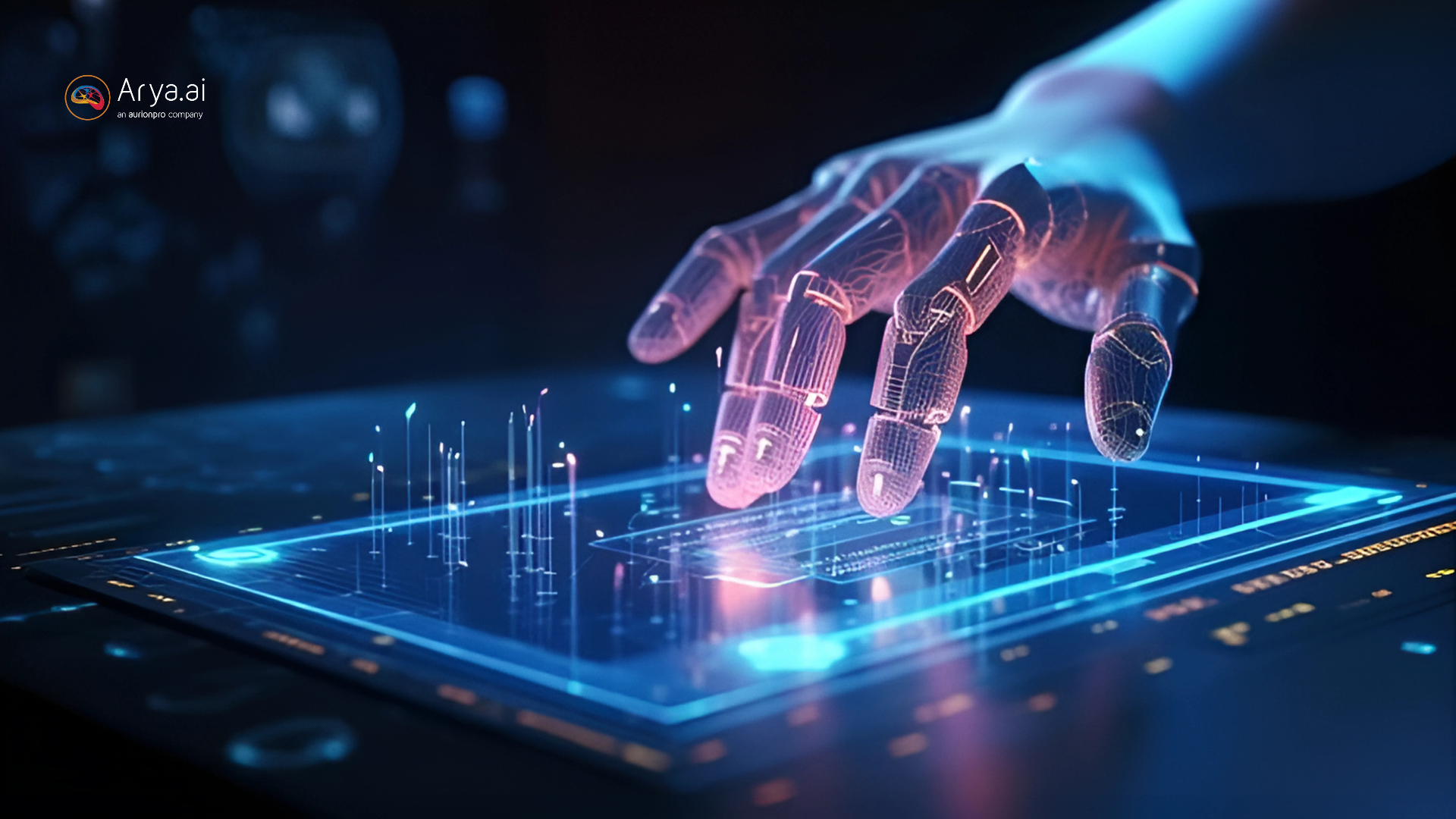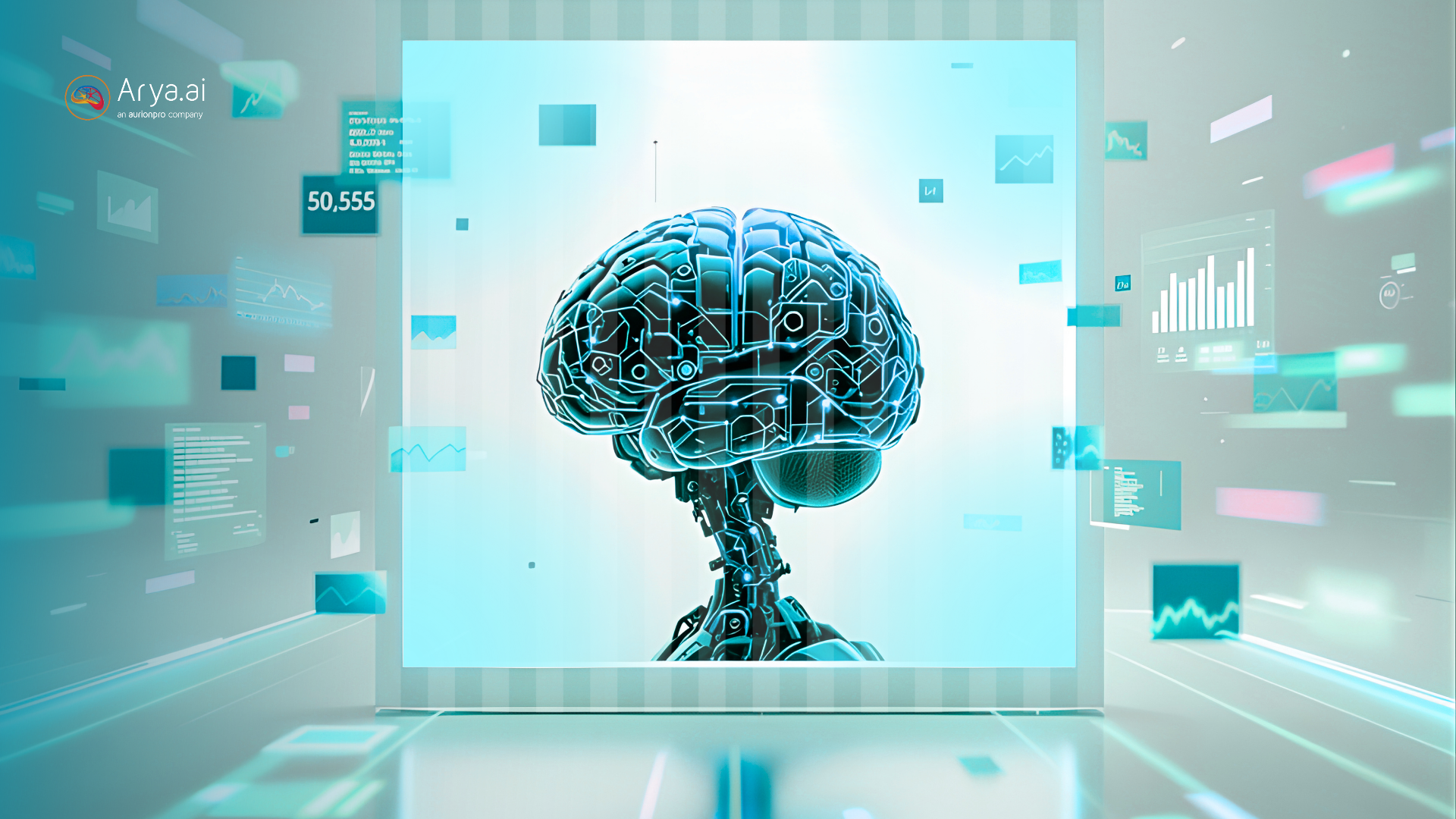
Retrieval-Augmented Generation (RAG) is the secret sauce behind many of today's smartest AI solutions in finance, from compliance copilots to fraud-hunting bots. In plain terms, RAG connects large language models with real-time access to relevant knowledge sources, which also helps pave the way for contextually aware AI solutions.
Below, we present ten compelling examples of how RAG is currently applied in the finance sector. Each example, whether a real deployment or a production-ready prototype, showcases a different way RAG is solving problems.
Understanding RAG: The Foundation
RAG merges the capabilities of large language models (LLMs) with external data sources to create more accurate and contextually relevant AI responses. The core innovation lies in its ability to retrieve relevant information from knowledge bases in real-time and incorporate it into generated responses, effectively grounding AI outputs in current, factual data.
Read more: Comparing LLM Fine-Tuning, Retrieval-Augmented Generation, and MCP (Tool Integration)
.jpg)
A typical RAG system consists of three main components:
- Retriever: Finds relevant documents or data fragments based on a query using semantic similarity searches through vector embeddings.
- Reranker: Scores and reorders retrieved results based on relevance to ensure the most pertinent information is prioritized.
- Generator: Takes the top-ranked context and generates coherent, informed responses using the retrieved information.
How RAG Works
When you ask a question, the system doesn't just look for keywords. First, it converts your query into a vector using an embedding model — essentially turning the meaning of your words into numbers. That vector is then matched against an indexed knowledge base using semantic similarity, which helps the retriever find the pieces of information that are most relevant to your intent, not just the exact words you used.
.jpg)
Next, the retriever passes those top results to a reranker (in many setups) to ensure the best matches rise to the top. Finally, the generator takes your query plus the curated context and produces a coherent, well-informed answer — weaving in the retrieved facts so the output is grounded in actual data rather than guesswork.
Agentic RAG: The Next Evolution
Agentic RAG represents the cutting edge of retrieval-augmented systems, incorporating LLM-based agents that dynamically decide how to proceed rather than following fixed pipelines. These systems can:
- Reformulate ambiguous queries for better retrieval results
- Choose among different tools and data sources
- Chain multiple retrievals and generations for complex answers
- Self-reflect and critique their own outputs
- Skip retrieval when answers are cached or trivial
Agentic RAG enables capabilities like multi-hop reasoning, where the system can progressively build context through multiple retrieval steps. For example, when asked about "the weather where Paul is located," an agentic system first retrieves Paul's location, then uses that information to retrieve the current weather for that location.
Top 10 Game-Changing Use Cases
1. Regulatory Compliance Q&A Copilot
Financial regulations are constantly shifting, and compliance teams are often overwhelmed by the sheer volume of updates, circulars, and internal policies they need to track.
A Regulatory Compliance Copilot powered by RAG could transform how these teams work. Instead of manually combing through 200-page PDFs, officers could ask questions like, "What are the latest AML requirements for cross-border transfers?" and instantly receive grounded, plain-language answers.
The system retrieves snippets from regulatory texts, internal compliance manuals, and bulletins, then generates a concise, audit-friendly summary. What makes this powerful is its transparency: every response comes with direct references to the source, so teams can cross-check with confidence. The result is fewer compliance gaps, faster decision-making, and reduced risk of costly fines.
2. Internal Knowledge Base Chatbot
Banks and fintechs accumulate sprawling knowledge repositories: HR guidelines, IT procedures, onboarding manuals, product specs, and more. Employees waste countless hours hunting for the right document or asking colleagues for answers that are buried in PDFs or SharePoint folders.
A RAG-powered internal chatbot could cut through that noise. Employees simply ask, "How do I reset my trading workstation login?" or "What's the policy on hybrid work allowances?" and the assistant instantly retrieves the relevant snippets from approved sources.
By vector-searching across all internal repositories, it ensures results are accurate and up-to-date. This reduces reliance on outdated FAQs and ensures sensitive data is only shared with the right people by respecting access controls.
For new hires, it means smoother onboarding; for seasoned staff, it means less friction and wasted time. Ultimately, this tool becomes the company's "always-on brain," reducing knowledge silos and making internal operations far more efficient.
3. Customer Support Chatbot 2.0
A next-gen RAG-powered support assistant could flip the earlier script of rule-based chatbots. Imagine a customer typing, "Why was my card declined at a restaurant in Paris?" Instead of a vague error message, the assistant retrieves data from the customer's account notes, the bank's transaction rules, and the help center knowledge base.
It then explains: "Your card was flagged for foreign use. To prevent this, you can enable international transactions in your app settings." Because it pulls from real-time sources, updates to policies or product features are instantly reflected in the chatbot's responses.
This reduces escalations to human agents, shortens resolution times, and improves customer trust. With personalization built in, the chatbot becomes less of an FAQ bot and more of a reliable digital concierge.
4. Personalized Investment Research Assistant
Wealth managers and investors face information overload—markets shift hourly, and tailoring insights to each portfolio is challenging. A RAG-powered research assistant could act like a personalized financial analyst, available on demand.
Advisors might ask, "How would a 50-basis-point rate hike impact my client's bond-heavy portfolio?" The assistant retrieves holdings data, scans real-time market news, and references past research reports to generate an actionable insight.
The output could look like: "Your client's long-duration bonds are likely to drop in value. A shift toward short-term instruments may help hedge risk." Unlike generic market commentary, this assistant delivers portfolio-specific analysis, grounded in both internal and external data.
For clients, it means more confidence and transparency in advice. For firms, it means advisors spend less time gathering information and more time building relationships. In practice, this kind of RAG assistant could democratize professional-grade analysis for all levels of investors.
5. Fraud Detection & Investigation Assistant
Fraudsters are getting smarter, and the schemes they orchestrate often span multiple accounts, customers, or even institutions. A RAG-powered fraud assistant could become an investigator's sidekick.
Analysts can ask, "Do these transactions resemble any known fraud case?" and the system instantly retrieves patterns from past fraud databases, regulatory alerts, and the customer's transaction history. For example, it may flag that a series of small deposits followed by a single large withdrawal mirrors a laundering tactic seen in previous cases. Instead of digging through disparate systems, investigators receive a clear, evidence-backed summary with links to the exact matches.
This speeds up case handling and reduces the risk of missing subtle red flags. More importantly, it empowers even junior analysts to conduct sophisticated investigations. By combining structured transaction data with narrative fraud reports, RAG creates an always-on detective that strengthens a bank's defenses against financial crime.
6. Automated Financial Report Writer
Reporting is one of finance's biggest time sinks. Teams spend days compiling metrics, drafting narratives, and double-checking every figure for accuracy. A RAG-driven report writer could automate much of that burden.
It ingests data from BI dashboards, accounting ledgers, and market updates, then drafts a polished narrative: "Revenue rose 5% quarter-over-quarter, driven by an 8% increase in transaction fees." Because the assistant retrieves directly from live data sources, every figure is grounded in reality, not estimates.
It can also pull in commentary from previous reports to ensure continuity in tone and style. Analysts then review and refine, rather than starting from scratch. This saves hours of manual compilation and reduces the likelihood of errors creeping in under deadline pressure. Over time, the tool could standardize reporting formats, improve compliance accuracy, and allow finance teams to spend more time on analysis and less on repetitive writing.
7. Loan Underwriting Document Assistant
Loan underwriting is a document-heavy process, often involving hundreds of pages of financial statements, credit reports, and supporting files. A RAG-powered assistant could drastically reduce the time it takes to review and summarize.
An underwriter might ask, "Summarize this applicant's monthly cash flow and highlight irregularities." The system retrieves the relevant details from uploaded documents, calculates key ratios like debt-to-income, and compares them against internal policy thresholds. It could generate an answer such as:
"The applicant's debt-to-income ratio is 42%, slightly above our preferred threshold. There's also a one-time expense in June that lowered net cash flow." Every output is linked to the supporting document, so underwriters can validate the results instantly.
This approach doesn't just save time; it reduces human oversight errors and ensures decisions are consistent with policy. In practice, it turns underwriting into a faster, more scalable, and less error-prone process.
8. Personal Finance Coach for Consumers
Personal finance apps are full of graphs and charts, but what people often need is simple, personalized advice. A RAG-powered finance coach could serve that role. A user might ask, "How can I save more money next month?"
The system would retrieve the user's transaction history, upcoming bills, and spending categories, then cross-reference this with budgeting best practices. It could reply: "You spent ₹5,000 on takeout last month. Cutting back by two meals per week would save ~₹2,000. Also, your utility bill jumped—check if there's a leak or mischarge."
The suggestions feel personal because they are grounded in the user's own data. With RAG, the assistant can also pull in relevant policy updates, like new tax savings schemes, so advice always reflects the latest information. The result: a financial app that goes beyond tracking to actually coaching, helping users take practical, actionable steps toward better money habits.
9. Product Recommendation and Comparison Assistant
Choosing between financial products is confusing—credit cards, loans, and insurance plans all come with various terms and conditions. A RAG-based comparison assistant could simplify that. Customers ask, "Which credit card best fits frequent travel and dining?" and the assistant pulls current details from the bank's product catalog—interest rates, perks, fees—and matches them to the customer's spending patterns.
The answer might be: "Card A gives 4% cash back on restaurants and no foreign transaction fees, making it ideal for your profile. Card B is cheaper but lacks travel perks." Unlike static comparison tables, this tool produces conversational, personalized guidance. Because the assistant always queries the latest product data, it eliminates mismatches caused by outdated brochures or websites.
For customers, it builds confidence in choosing the right product. For banks, it improves conversion rates and reduces sales friction, acting as a digital product specialist available anytime.
10. Market & Risk Insights Aggregator
Executives and risk managers rely on daily briefings, but preparing them takes hours of analyst effort. A RAG-powered insights aggregator could automate this process by combining internal and external data into one coherent narrative.
A manager might ask, "What are today's biggest risks to our portfolio?" The system retrieves real-time market data, the firm's portfolio exposure reports, and relevant research memos, then synthesizes a concise update:
"Tech stocks dropped 2% overnight; with 35% portfolio exposure, expect a ~$10M drawdown. Oil prices rose 3%, with a minor impact on commodities holdings. Liquidity remains stable." Because it grounds its answers in live feeds and internal systems, the briefing is accurate, actionable, and immediately available.
This helps leaders act faster, reduces dependency on manual reports, and improves situational awareness. Essentially, it's like having a virtual chief of staff scanning the world and the firm's books, then serving up the insights that matter most.
Conclusion
Retrieval-Augmented Generation is a paradigm shift in how financial institutions access, synthesize, and act on information. By marrying the reasoning power of LLMs with live, trusted data sources, RAG systems turn every query into an opportunity for faster insight, better decisions, and more confident execution.
For product managers and innovation leaders, the message is clear: start experimenting now. Identify your highest-friction workflows, connect your knowledge sources, and pilot a small-scale RAG system.
If you need help in building an architecture for domain-specific AI solutions, connect with us.





.png)





.png)




.png)
.svg)


